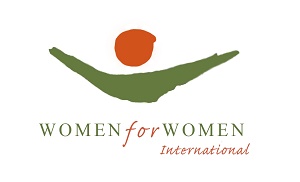 Special to the Philanthropy Journal
Special to the Philanthropy Journal
By Desiree Dickerson
Over the past year, blockchain technology has been touted as the miracle solution to all of society’s pressing ailments. From food supply chains and insurance claims, to art authentication and DNA sequencing, blockchain technology is touching almost every industry, and humanitarian and nonprofit work is no different. While blockchain technology has the potential to significantly impact these sectors and their efforts, it is not always the best fit for every organization. Nonetheless, nonprofits should fully evaluate the technology to understand if it aligns to organizational needs, and if so, determine any necessary business justification for implementation.
This article provides an introduction to blockchain, potential use cases for philanthropic work, and suggested steps for examining if it is right for your organization.
In response to the 2008 financial crisis, an anonymous individual, or group of individuals, developed a technology to decentralize control and power of money, so often abused throughout the financial services industry. Many may recognize this as the advent of Bitcoin (often unfairly linked to criminal syndicates), but it was also the first mainstream recognition and acceptance of what is commonly referred to as blockchain technology.
While understanding the intricacies of blockchain, Bitcoin, and other digital currencies is beyond the scope of this article, a working and relevant definition is necessary. Blockchain technology, a part of the broader class of distributed ledger technology, provides an immutable (unchangeable and incorruptible), decentralized ledger of cryptographic transactions that record and verify the transfer of value between peers. Simplified, blockchain acts as a ledger similar to that of a bank, in that it verifies that a transaction occurs between two parties; just as a bank verifies that you paid for your dinner at a restaurant – by ensuring you had sufficient funds in your account, and the correct amount was transferred to the restaurant’s account, from your account.
However, instead of one centralized entity, such as a bank, verifying and recording transactions, millions of computers work together to agree and validate every transaction almost instantly. This rids of the possibility of one malicious party or government asserting control over how individuals spend their money. Figure 1 illustrates the blockchain transaction process.
Without diving into too much detail, this validation occurs by using a distributed network of computers to solve complex cryptographic math problems, which once solved, verify the transaction within a “block” of transactions, which is then added to a “chain” of transactions. This record of time stamped transactions can never be changed and guarantee funds can never be double spent. No bad actors or threatening party can ever alter these records, which is extremely powerful when considering rights to property, speech, and finances.
For additional information and resources on blockchain technology, please refer to this Medium post.
Humanitarian Use Cases
The number of blockchain use cases and applications is consistently increasing and includes everything from gambling to genetic testing. While the commercial sector is quickly adopting blockchain technology to increase profits, reduce costs, and offer new and exciting solutions, blockchain use cases touch the humanitarian sector, and offer endless possibilities for solving global issues. Nonprofits should make concerted efforts to understand blockchain technology and understand if, how, and when, the technology may be appropriately implemented within an organization.
After understanding the technology at a high-level, nonprofits should evaluate the best use cases for the organization. The following list outlines humanitarian blockchain use cases with palpable work being done:
- Financial – The most logical implementation of blockchain and resulting cryptocurrency is in the financial space. Of specific interest to non-profits is blockchain’s potential to disrupt the current global remittance model, as well as change the way the world is banked. Women for Women International, through Hilton Prize Coalition support, is examining how blockchain can reduce fees and transaction times associated with remittance payments through partnerships with organizations similar to BitPesa, BanQu, and others.
- Identity – Globally, around 25% of children under the age of five have no birth certificate or any type of official government registration (1). More often than not, this lack of official identity extends to adulthood, creating complications with travel, banking, and property ownership, among other issues. Blockchain-based identity services have been piloted successfully in refugee environments and also in Estonia, as evidenced by their e-Estonia identity services program built on the blockchain (2).
- Property Rights – Property ownership can become contentious after times of conflict. As leadership changes, land may be seized, and in the event of the loss of loved ones, dissenting parties may block the rightful transfer of property ownership and even financial savings. With property transfers conducted on the blockchain, untampered proof of ownership avoids loss of property after conflict or catastrophe. The Bitfury Group successfully tested blockchain property rights in the Republic of Georgia (3).
- Emergency Aid – During and after catastrophic events, or during refugee crises, aid transfer via blockchain transactions help organizations deliver aid exactly when it is needed. Direct blockchain transfer avoids government censorship, intermediaries mishandling funds, and logistical burdens associated with physical and electronic cash transfers. In May 2017, the United Nations World Food Programme (WFP) successfully sent aid to over 10,000 Syrian refugees through the Ethereum blockchain (4).
- Supply Chain – Blockchain technology is also effective in disrupting supply chain management in numerous market scenarios.
- Food: IBM successfully tested blockchain usage in food supply chains, reducing the prevalence of food borne illnesses (5). The open source, public nature of blockchain technology may also help create transparency and accountability in tracking donations within nonprofits and humanitarian organizations.
- Forced workers: While not always apparent, forced migrant workers and human trafficking inherently harbor a supply chain of unwilling human participants. The Department of State is currently addressing the issue of forced migrant workers, in partnership with Coca-Cola and the Bitfury Group, by creating a secure worker registry on the blockchain for transparent contracts (6).
- Freedom of Speech – Access to free and open information is occasionally stiffened or outright censored under oppressive rule. Some governments censor news and media, access to social media platforms, and even how and on what citizens spend money. Because no central authority can control or alter data on the blockchain, social platforms built on blockchain technology may offer censorship resistance communications.
Considerations and Planning
While blockchain technology has the capacity to significantly impact areas related to each of the above use cases, not all problems can be solved with blockchain technology, nor should every organization implement blockchain solutions. Nonprofits especially should take a cautious and measured approach when considering blockchain technology, and should follow the four recommended steps/actions below:
- Understand the state of the technology – Developing a high-level understanding of the technology is essential for determining the applicability to an organization. Blockchain technology is currently in its infancy and struggles with scaling and ease of use. While blockchain may be a viable solution in the future, the current state of the technology and pace of evolution may make current applicability impractical.
- Consider the problem – More often than not, blockchain is not the solution to every problem. Organizations should ask the questions: “What problem are we trying to solve with blockchain?”, “Can this problem be solved without blockchain?”, and “What are the hurdles to implementing this technology?” This is crucial to determining if blockchain is a relevant or feasible solution. Other technology may be a better fit.
- Evaluate the business case – If blockchain technology is determined to be an appropriate solution, the organization should conduct a thorough business case analysis (BCA). This will help elucidate the required financial and people resources, timeline, and legal/compliance requirements necessary for implementation; and whether the resulting solution, impact, cost savings, and/or enhancements justify the input costs.
- Consult partners – Nonprofits and philanthropic organizations missions generally do not center on developing emerging technologies, rather, they focus on humanitarian aims. Thus, when implementing blockchain technology, organizations should develop technology partnerships to leverage pre-existing technology and subject matter experts.
As an example, Women for Women International (WfWI) recently followed these steps when considering blockchain for enhancing its current efforts to empower women in post-conflict, marginalized areas. After understanding the technology and determining the feasibility, WfWI developed a plan and roadmap, and outlined required strategic partnerships for overcoming technology hurdles and implementing blockchain solutions for improved remittance payments and access to financial services. While significant work and milestones must be achieved in preparation for WfWI to fully launch blockchain-based financial services in its programs, this preemptive assessment and planning will strongly position the organization to effectively implement the technology at the appropriate time.
By avoiding the hype surrounding new technologies, and taking a methodical approach as outlined in the steps above, nonprofit organizations can truly leverage technology, such as blockchain, without wasting resources. Developing an awareness of the technology and understanding if and when it is appropriate for your organization is imperative to staying competitive and maintaining the capacity to use emerging technology to better serve the public good.
References
- United Nations Children’s Fund (UNICEF). (2013). Every Child’s Birth Right: Inequities and trends in Birth Registration. New York, New York: UNICEF. Retrieved from: https://data.unicef.org/wp-content/uploads/2015/12/Birth_Registration_lores_final_24.pdf
- e-estonia. id card. Retrieved from: https://e-estonia.com/solutions/e-identity/id-card/
- Shin, L. (2017). The First Government to Secure Land Titles on the Bitcoin Blockchain Expands Project. Forbes Blog. Retrieved from: https://www.forbes.com/sites/laurashin/2017/02/07/the-first-government-to-secure-land-titles-on-the-bitcoin-blockchain-expands-project/#1569da594dcd
- del Catillo, M. (2017). United Nations Sends Aid to 10,00 Syrian Refugees Using Ethereum Blockchain. Coindesk. Retrieved from: https://www.coindesk.com/united-nations-sends-aid-to-10000-syrian-refugees-using-ethereum-blockchain/
- IBM Research. Consortium for Sequencing the Food Supply Chain. Retrieved from: http://www.research.ibm.com/client-programs/foodsafety/index.shtml
- Chavez-Dreyfus, G. (2018). Coca-Cola, U.S. State Dept to use blockchain to combat forced labor. Reuters. Retrieved from: https://ca.reuters.com/article/businessNews/idCAKCN1GS2PY-OCABS
Desiree Dickerson is a Hilton Prize Coalition Fellow at Women for Women International (WfWI) in Washington, D.C., where she serves as Blockchain and Digital Currency Fellow. She is exploring how blockchain and distributed ledger technology, as well as other emerging technologies, can aid WfWI in its mission to empower women in marginalized countries affected by war and conflict.






